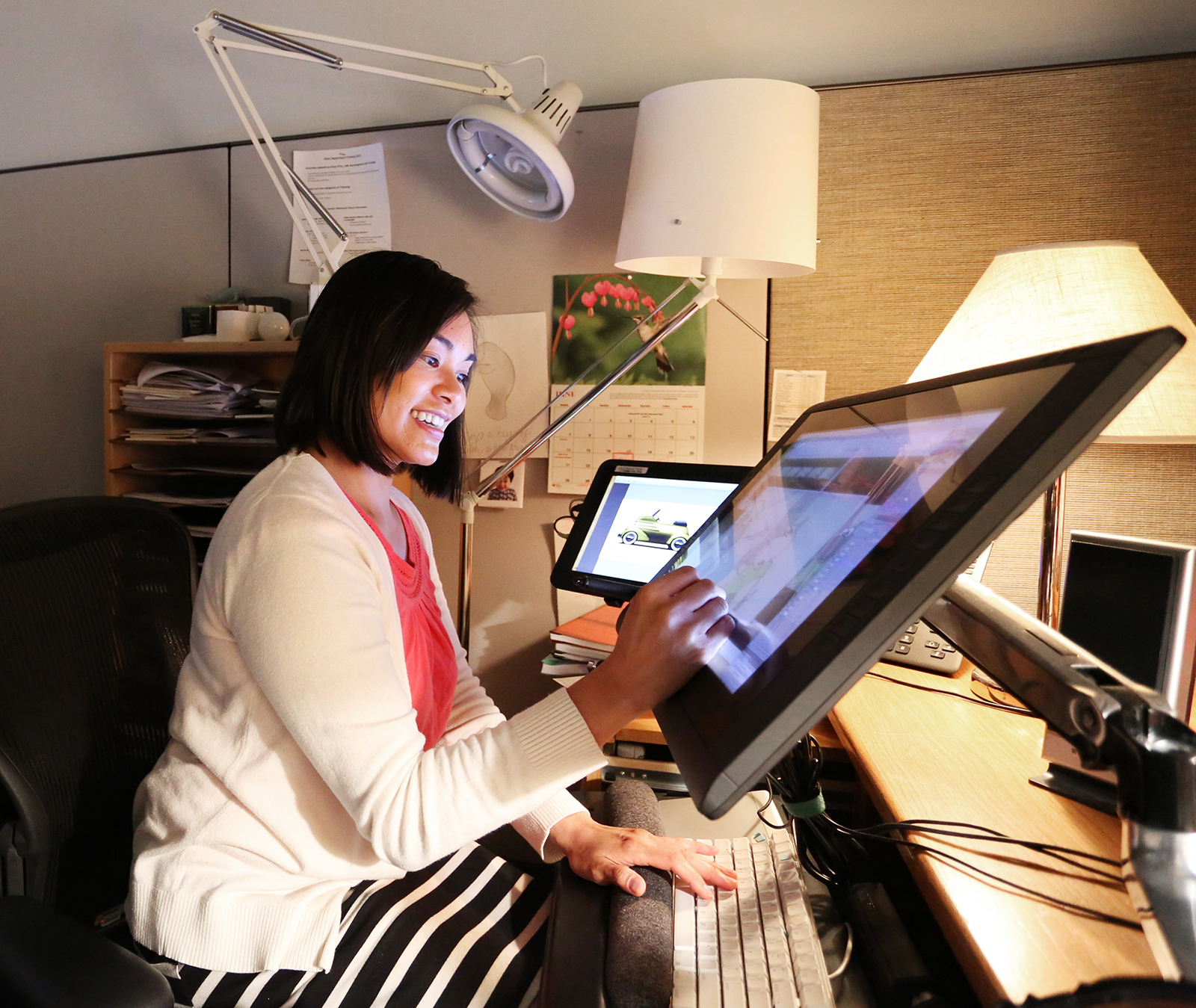Oscars 2017: Unwinding reels of memory to storyboard scenes in ‘Zootopia’

UCLA alumna Josie Trinidad was co-head of storyboard for the movie “Zootopia,” which is nominated for best animated feature film at the 89th Academy Awards. (Courtesy of Walt Disney Pictures)
By Sally Lee
Feb. 24, 2017 1:48 a.m.
The walls of Melnitz Hall, lined with Hollywood movie posters, foreshadow the potential of students at UCLA. After studying within the entertainment capital of the United States, some Bruin filmmakers go on to contribute to award-winning films. In the week leading up to the 2017 Academy Awards, Daily Bruin A&E will spotlight UCLA alumni behind the scenes and on screen of Oscar-nominated films.
College-aged Josie Trinidad gazed out the window of her small, cold apartment room in London.
Twenty years later, she storyboarded a scene with a seemingly identical apartment setting for Judy Hopps, the female bunny cop protagonist in Walt Disney Animation Studios’ “Zootopia.”
The UCLA alumna knew exactly how homesick Judy felt in an apartment far from home, since she felt the same way during her first time studying abroad, Trinidad said.
“I thought I had to storyboard that scene because I knew exactly how that felt like, to be away from family and questioning whether this is the right thing to do,” Trinidad said. “I experienced what Judy was experiencing.”
The 2016 film “Zootopia” takes place in a city of anthropomorphic animals and follows a rookie bunny cop and a cynical con artist fox as they collaborate to uncover a conspiracy.
[Read more: Oscars 2017]
Trinidad served as co-head of storyboard for the movie, which has been nominated for an Academy Award for best animated feature film. She drew inspiration from her personal experiences as a student, storyboard artist and woman when crafting the animal world, she said.
After reading the initial script, Trinidad felt a kinship with Judy because the bunny’s move to the big city from a small, agricultural town paralleled Trinidad’s own from her agrarian home in Ventura County to Los Angeles for college. Scenes that featured Judy’s parents’ farm resemble Trinidad’s childhood in that her house was surrounded by avocado trees and citrus groves.
Her childhood best friend and classmates were farmers, and many roads were named after farmer families, Trinidad said.
Additionally, she relates to Judy’s struggle trying to become a cop – a role that is not traditionally filled by rabbits in the world of “Zootopia.”
“When I first started at Disney in 2004, the animation world had only two women in the story department out of 35 to 40 people,” Trinidad said. “For ‘Princess and the Frog,’ I was the only female story artist with the 12 men in that room.”
The story room for “Zootopia” was more diverse and collaborative in gender, age and ethnicity, Trinidad said. The directors encouraged everyone to be honest and open in offering critical views, she said.
“Because of the story room’s diversity, the story room felt safe and I didn’t feel like I needed to be a group of anything,” Trinidad said. “I could just be me.”
As co-head of story, she attended meetings in the story room to work with her team of 12 to 15 people during story pitch, and a smaller group during editorial meetings, she said. On top of meetings, Trinidad stayed in her office on her own time to draw by herself, using a digital tablet and Photoshop.

Trinidad’s office inspired the setting for scenes inside sheep Mrs. Bellwether’s office – one of the thousands of scenes she storyboarded. Small details like a Post-it that reads “Please knock” on her door matches the Post-it on Trinidad’s door.
The items in the background in the scene are infused from Trinidad’s own life, she said. Small items like reminders on the computer desktop to “call Doug” and “pay your bills” and little toys are modeled after the decorations Trinidad keeps on her work desk.
“They are small details and items from my own life that only I would notice,” Trinidad said.
[Oscars 2017: ‘La La Land’ dance classes offer insight into fancy footwork]
Storyboard artists often feel fascinated by, and can personally relate to the characters, both main and supporting, said Chuck Sheetz, a current animation professor at the School of Theater, Film and Television. Sheetz is also compelled by oddball characters, because perhaps they resemble who he is in real life, he said.
“You have to relate to it,” Sheetz said. “You have to act it out like an actor.”
Disney did not provide additional sources for this article.
Throughout Trinidad’s work as co-head of story, she had to learn to find her voice and be heard, like Judy in “Zootopia,” she said. Naturally soft-spoken, Trinidad found ways to communicate effectively with everyone in the story room.
“Over the years I’ve developed how to speak and be heard without changing who I am. Speaking with integrity and grace, (I can) be heard,” Trinidad said. “It has been an ongoing learning process for me.”


